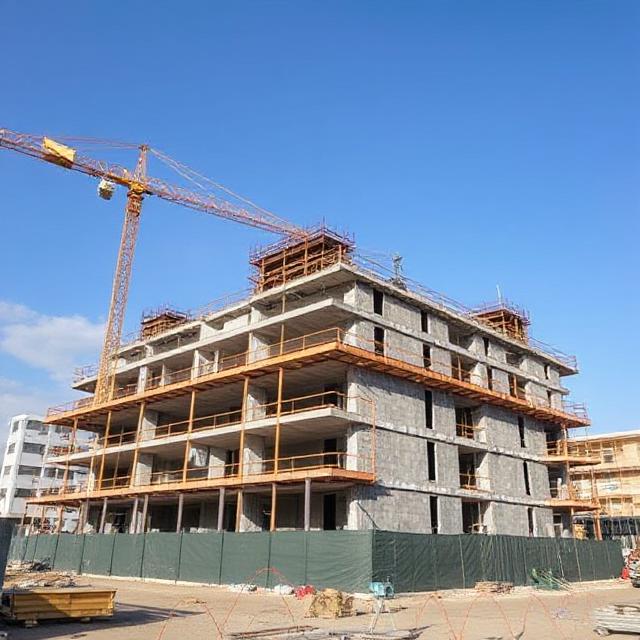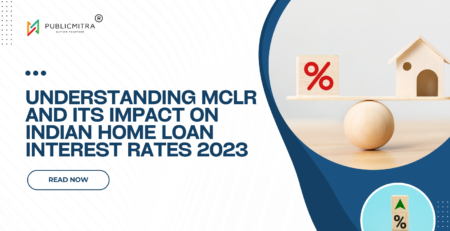GST Impact on Real Estate Construction Materials: Pre-GST vs Current Tax Structure Analysis
Introduction: The GST Revolution in Real Estate Construction
The implementation of Goods and Services Tax (GST) in India on July 1, 2017, marked a pivotal transformation in the country’s taxation landscape, fundamentally altering how construction materials are taxed. This comprehensive tax reform replaced a complex web of multiple indirect taxes with a unified system, significantly impacting the real estate sector’s cost structure and operational dynamics.
GST on construction has streamlined the tax code and absorbed a number of state and federal levies. Construction materials are taxed at rates ranging from 5% to 28%, depending on their classification under various tax brackets. This standardization has brought both opportunities and challenges for real estate developers, contractors, and ultimately, homebuyers.
The construction industry, being one of India’s largest economic sectors, has experienced significant changes in material procurement costs, project financing, and overall pricing strategies. Understanding these changes is crucial for stakeholders to make informed decisions and optimize their operations in the current tax environment.
This detailed analysis examines the pre-GST versus post-GST taxation structure for key construction materials including paints, steel, electrical wires, bricks, and cement. We’ll explore how these changes have affected project costs, supply chain management, and the overall affordability of housing in India.
Understanding the Pre-GST Tax Structure
The Complex Web of Multiple Taxes
Before GST implementation, the construction industry operated under a fragmented tax system that included various central and state levies. This complex structure often led to tax cascading, where taxes were levied on taxes, inflating the overall cost of construction materials.
Central Taxes in the Pre-GST Era
The central government imposed several taxes on construction materials:
Central Excise Duty: This was the primary central tax on manufactured goods, including construction materials. Rates varied significantly across different materials, typically ranging from 6% to 16% for most construction items.
Service Tax: Applied to construction services, this tax was levied at 15% (including education cess and higher education cess). This significantly impacted the cost of construction contracts and specialized services.
Customs Duty: Import duties on construction materials and machinery varied based on government policies and international trade agreements. These duties directly affected the cost of imported construction materials and equipment.
State-Level Taxation
State governments imposed their own set of taxes, creating a complex interstate commerce scenario:
Value Added Tax (VAT): Different states had varying VAT rates for construction materials, typically ranging from 4% to 15%. This created significant price disparities across state boundaries.
Central Sales Tax (CST): Applied to interstate transactions, CST rates ranged from 2% to 15%, making interstate procurement expensive and complex.
Entry Tax: Some states imposed entry taxes on goods entering their territory, further complicating the cost structure.
Octroi: Municipal corporations levied octroi on goods entering their jurisdiction, adding another layer of taxation.
Material-Specific Pre-GST Tax Rates
Cement
In the pre-GST era, cement faced multiple taxation layers:
- Central Excise Duty: 6-10%
- VAT: 4-6% (varied by state)
- Entry Tax: 1-2% (where applicable)
- Octroi: 1-2% (in applicable areas)
Total effective tax rate often exceeded 12-15% when all taxes were combined.
Steel and Iron Products
Steel products experienced complex taxation:
- Central Excise Duty: 6-12.5%
- VAT: 4-5%
- Entry Tax: 1-2%
- Additional levies in some states
The effective tax rate typically ranged from 12-18%.
Paints and Protective Coatings
Paint products faced:
- Central Excise Duty: 12-16%
- VAT: 12-15%
- Various state-specific levies
Total tax burden often reached 20-25%.
Electrical Wires and Cables
Electrical products were subject to:
- Central Excise Duty: 12-14%
- VAT: 12-15%
- State-specific taxes
Combined rates typically ranged from 15-20%.
Bricks and Clay Products
Traditional bricks faced:
- VAT: 4-6%
- Entry Tax: 1-2%
- Local taxes and levies
Total effective taxation was generally 6-10%.
The GST Framework: A Unified Approach
GST Structure and Implementation
The Goods and Services Tax system introduced a four-tier structure with rates of 5%, 12%, 18%, and 28%, designed to accommodate different categories of goods and services based on their essentiality and luxury classification.
The GST rate for construction materials also depends on the specific items. Generally, construction materials are subject to an 18% GST rate. However, the actual rates vary significantly based on the specific material and its classification under the GST framework.
Key Features of GST for Construction Materials
Input Tax Credit (ITC)
One of the most significant advantages of GST is the Input Tax Credit mechanism, which allows businesses to claim credit for taxes paid on inputs. This eliminates the cascading effect of taxes that was prevalent in the pre-GST era.
Unified Market
GST has created a unified national market by eliminating interstate trade barriers and multiple tax checkpoints, reducing logistics costs and transit times.
Simplified Compliance
The digital-first approach of GST has simplified compliance procedures, though it has also required businesses to upgrade their accounting and billing systems.
Current GST Rates on Construction Materials (2025)
Cement and Concrete Products
cement is taxed at 28%, making it one of the highest-taxed construction materials under the GST regime. This high rate reflects the classification of cement as a product with inelastic demand.
Specific Classifications:
- Portland cement: 28% GST
- White cement: 28% GST
- Ready-mix concrete: 28% GST
- Autoclaved Aerated Concrete (AAC) blocks containing more than 50% fly ash content will now fall under HS 6815 and attract a 12% GST rate, reducing the previous rate of 18% GST.
Steel and Iron Products
Steel products generally attract 18% GST, though there are variations:
18% GST Category:
- Structural steel
- Reinforcement bars (rebar)
- Steel pipes and tubes
- Steel sheets and plates
12% GST Category:
- Some specialized steel products
- Galvanized steel sheets (in specific categories)
Paints and Protective Coatings
Paint products are subject to varying GST rates based on their composition and application:
18% GST:
- Emulsion paints
- Enamel paints
- Primer and undercoats
- Specialty architectural paints
28% GST:
- Luxury and decorative paints
- Automotive paints
- Industrial protective coatings
Electrical Wires and Cables
Electrical products typically attract 18% GST:
18% GST Category:
- Copper wires and cables
- Aluminum wires and cables
- Electrical conduits
- Switchgear and electrical fittings
12% GST Category:
- Basic electrical accessories
- Simple electrical fittings
Bricks and Masonry Materials
bricks at 12% represents a significant increase from the pre-GST era for most brick types.
12% GST:
- Fly ash bricks are taxed at a reduced GST rate of 12%
- Clay bricks
- Concrete blocks
28% GST:
- Properties made of cement, artificial stone or concrete (reinforced or not), flagstone, building blocks, cemented bricks, including prefabricated components for building construction, attract a GST of 28 percent.
Detailed Comparative Analysis: Pre-GST vs GST
Cost Impact Analysis
Cement: The High-Impact Material
Pre-GST Scenario:
- Average combined tax rate: 12-15%
- Interstate procurement complications
- Multiple compliance requirements
- Tax cascading effects
Post-GST Scenario:
- Fixed GST rate: 28%
- Simplified interstate transactions
- Input Tax Credit availability
- Unified compliance system
Net Impact: The effective tax rate on cement has increased significantly, with the 28% GST rate representing a substantial jump from pre-GST levels. However, the availability of Input Tax Credit and elimination of cascading effects have partially offset this increase for registered businesses.
Steel: The Structural Foundation
Pre-GST Comparison:
- Previous effective rate: 12-18%
- Current GST rate: 18%
- Net impact: Neutral to slightly positive
The steel industry has experienced relative stability in tax rates, with the 18% GST rate falling within the previous effective tax range. The elimination of multiple taxes and availability of seamless Input Tax Credit has generally improved the sector’s operational efficiency.
Paints: The Protective Layer
Pre-GST vs GST Analysis:
- Previous combined rate: 20-25%
- Current GST rate: 18-28%
- Net impact: Mixed, depending on paint category
Premium and specialty paints face higher taxation at 28% GST, while basic architectural paints benefit from the 18% rate, which is lower than most pre-GST effective rates.
Electrical Wires: The Power Infrastructure
Comparative Assessment:
- Pre-GST effective rate: 15-20%
- Current GST rate: 18%
- Net impact: Generally positive
The electrical wire and cable industry has benefited from rate rationalization, with most products falling under the 18% GST category, representing a moderate tax environment compared to the pre-GST era.
Bricks: The Building Foundation
Tax Impact Analysis:
- Pre-GST rate: 6-10%
- Current GST rate: 12%
- Net impact: Increased tax burden
Traditional brick manufacturing and procurement have experienced a tax increase, with the 12% GST rate representing a significant jump from pre-GST levels. This has contributed to increased basic construction costs.
Impact on Construction Project Costs
Overall Cost Structure Changes
The implementation of GST has led to a fundamental shift in how construction project costs are calculated and managed. While some materials have become more expensive due to higher tax rates, the overall impact varies significantly based on project type, scale, and procurement strategies.
Material Cost Inflation
High-Impact Materials:
- Cement: 15-20% effective cost increase
- Bricks: 20-30% cost increase
- Premium paints: 10-15% increase
Moderate Impact Materials:
- Steel: 5-10% variation (positive or negative)
- Electrical materials: 0-5% cost reduction
Low Impact Materials:
- Sand: Minimal change (5% GST rate)
- Basic electrical fittings: Slight reduction
Project-Level Cost Analysis
Residential Projects: For typical residential construction, the overall material cost increase due to GST has been estimated at 8-12%, primarily driven by higher cement and brick costs. However, the availability of Input Tax Credit for registered developers has helped offset some of these increases.
Commercial Projects: Commercial construction has experienced relatively lower impact due to better ITC utilization and economies of scale in material procurement. The overall cost increase has been limited to 5-8%.
Infrastructure Projects: Large infrastructure projects have shown mixed results, with some experiencing cost reductions due to improved logistics and ITC benefits, while others face increases due to higher cement and steel costs.
Supply Chain Optimization
Logistics and Transportation
The elimination of inter-state barriers and multiple checkpoints has significantly improved logistics efficiency. Transportation costs have reduced by 15-20% for long-distance material movement, partially offsetting the impact of higher material costs.
Inventory Management
The unified tax structure has enabled better inventory management across multiple locations, reducing working capital requirements and storage costs. Companies can now maintain centralized inventory systems without worrying about varying state tax rates.
Vendor Consolidation
GST has facilitated vendor consolidation, allowing construction companies to work with fewer, larger suppliers who can provide better Input Tax Credit benefits and economies of scale.
Sectoral Impact Analysis
Real Estate Developers
Real estate developers have experienced varied impacts based on their registration status and project types:
Registered Developers:
- Benefit from Input Tax Credit
- Improved cash flow management
- Better cost predictability
- Enhanced inter-state operations
Unregistered Small Developers:
- Higher material costs without ITC benefits
- Increased compliance burden
- Potential margin compression
- Need for business model adaptation
Contractors and Subcontractors
The contracting industry has undergone significant transformation:
Works Contracts: The GST rate for works contracts typically ranges from 1% to 18%, depending on the project type and the value of goods involved. This has created a more structured approach to contract taxation.
Specialized Contractors:
- Electrical contractors: Generally neutral impact
- Plumbing contractors: Moderate cost increase
- Painting contractors: Mixed impact based on paint types
- Masonry contractors: Increased costs due to higher brick taxes
Material Suppliers and Manufacturers
Cement Industry
The cement industry has faced significant challenges due to the 28% GST rate, leading to:
- Price increases passed to consumers
- Demand sensitivity in certain market segments
- Increased focus on efficiency and cost optimization
- Enhanced importance of ITC management
Steel Industry
Steel manufacturers have adapted well to the GST regime:
- Streamlined interstate sales
- Improved working capital management
- Better integration with downstream industries
- Enhanced export competitiveness
Paint Industry
The paint industry has experienced mixed results:
- Premium segment facing higher taxation
- Basic segment benefiting from rate reduction
- Increased focus on product categorization
- Enhanced supply chain efficiency
Regional Variations and Market Dynamics
Interstate Trade Facilitation
The elimination of Central Sales Tax and various state-level barriers has revolutionized interstate trade in construction materials. This has led to:
Market Integration
- Reduced price disparities across states
- Improved competition among suppliers
- Better resource allocation
- Enhanced market accessibility for smaller players
Logistics Optimization
- Faster transportation and delivery
- Reduced documentation requirements
- Lower transit losses and delays
- Improved inventory turnover
State-Specific Impacts
High-Production States
States with significant material production (like cement-producing states) have experienced:
- Increased interstate sales
- Better capacity utilization
- Enhanced industrial growth
- Improved tax collection efficiency
High-Consumption States
States with major construction activities have seen:
- More competitive material pricing
- Better supply chain options
- Reduced project completion times
- Enhanced real estate market dynamics
Technology and Digitization Impact
Digital Compliance Systems
The GST regime has accelerated digitization in the construction industry:
Accounting and Billing
- Mandatory digital invoice generation
- Real-time tax computation
- Automated compliance reporting
- Enhanced audit trails
Supply Chain Management
- Digital procurement platforms
- Automated inventory management
- Real-time cost tracking
- Better vendor management systems
Data Analytics and Decision Making
The digital nature of GST has enabled:
- Better cost analysis and forecasting
- Improved procurement strategies
- Enhanced project planning
- Data-driven decision making
Future Outlook and Trends
Potential Rate Rationalization
Industry experts anticipate potential changes in GST rates for construction materials:
Cement Rate Reduction
There are ongoing discussions about reducing cement GST from 28% to 18%, which could significantly impact construction costs and housing affordability.
Steel Rate Stability
The 18% rate on steel is expected to remain stable, given its classification as an essential industrial input.
Paint Industry Evolution
The paint industry may see further rate rationalization based on product categories and their essential nature.
Emerging Material Categories
New construction materials and technologies are continuously being classified under GST:
Green Building Materials
- Solar panels and green energy systems
- Sustainable building materials
- Energy-efficient systems
- Water conservation technologies
Prefabricated Components
- Modular construction elements
- Prefabricated structural components
- Advanced building systems
- Smart building technologies
Implications for Homebuyers and End Consumers
Housing Affordability
The GST impact on construction materials has had mixed effects on housing affordability:
Cost Increases
- Higher cement and brick costs have contributed to increased construction expenses
- Premium housing segments face higher impact due to expensive materials
- Basic housing has experienced moderate cost increases
Cost Optimizations
- Improved logistics and supply chain efficiency
- Better project planning and execution
- Enhanced competition leading to better pricing
- Availability of diverse material options
Quality and Standards
The GST regime has indirectly contributed to quality improvements:
Formal Market Growth
- Increased participation of organized suppliers
- Better quality control and standards
- Enhanced traceability of materials
- Improved warranty and service support
Innovation Incentives
- Encouragement for new material development
- Investment in manufacturing efficiency
- Focus on sustainable and eco-friendly options
- Technology adoption in construction
Regulatory Compliance and Best Practices
Compliance Requirements
For Developers and Contractors
- Mandatory GST registration for large projects
- Regular filing of GST returns
- Maintenance of proper documentation
- Compliance with Input Tax Credit rules
For Material Suppliers
- Accurate product classification
- Proper invoice generation
- Timely tax payment and filing
- Maintenance of audit trails
Best Practices for Cost Management
Procurement Strategies
- Bulk purchasing to leverage economies of scale
- Vendor consolidation for better ITC benefits
- Strategic timing of purchases
- Effective inventory management
Project Planning
- Accurate cost estimation including GST impact
- Proper budgeting for tax liabilities
- Contingency planning for rate changes
- Regular monitoring and control
Conclusion: Navigating the GST Landscape
The implementation of GST has fundamentally transformed the taxation landscape for construction materials in India. While the system has brought about significant improvements in terms of administrative efficiency, interstate trade facilitation, and compliance simplification, it has also resulted in increased costs for certain key materials like cement and bricks.
The net impact on the construction industry has been mixed, with different stakeholders experiencing varying degrees of benefit or burden. Large, organized players have generally benefited from the streamlined system and Input Tax Credit mechanisms, while smaller players have faced challenges in adapting to the new regime.
For the real estate sector, the GST implementation represents both challenges and opportunities. While material costs have increased in some categories, the overall efficiency gains, improved supply chain management, and enhanced market integration have created new possibilities for cost optimization and business growth.
Looking forward, the construction industry must continue to adapt to the GST framework while advocating for rational rate structures that balance revenue generation with industry growth and housing affordability. The success of GST in the construction sector will ultimately depend on how well all stakeholders can leverage the system’s benefits while managing its challenges.
The transformation brought by GST is still evolving, and the construction industry must remain agile and responsive to changes in rates, regulations, and market dynamics. By embracing best practices in compliance, procurement, and project management, the industry can maximize the benefits of this unified tax system while contributing to India’s economic growth and development.
As the GST system matures, we can expect further refinements and optimizations that will enhance its effectiveness and reduce compliance burden. The construction industry’s experience with GST will continue to shape policy decisions and contribute to the overall success of this landmark tax reform.
This analysis is based on current GST rates and regulations as of 2025. Tax rates and policies may change, and readers are advised to consult current official sources and tax professionals for the most up-to-date information.







